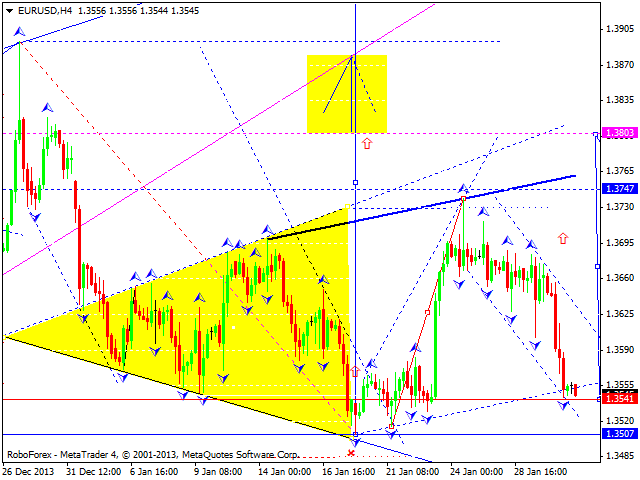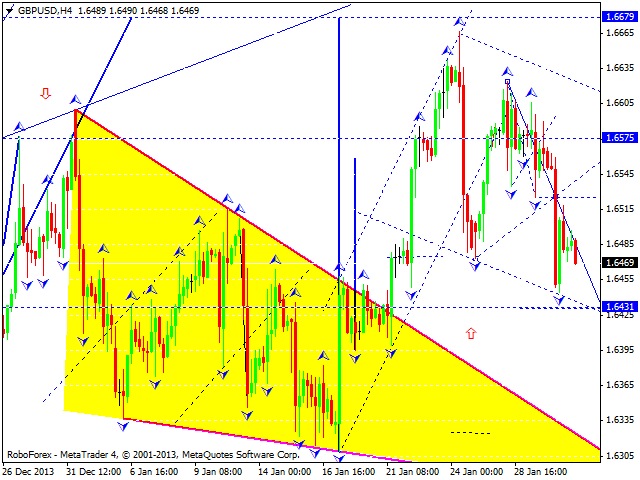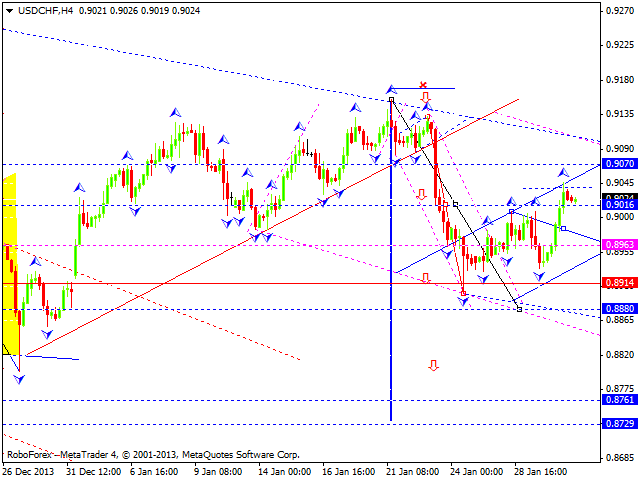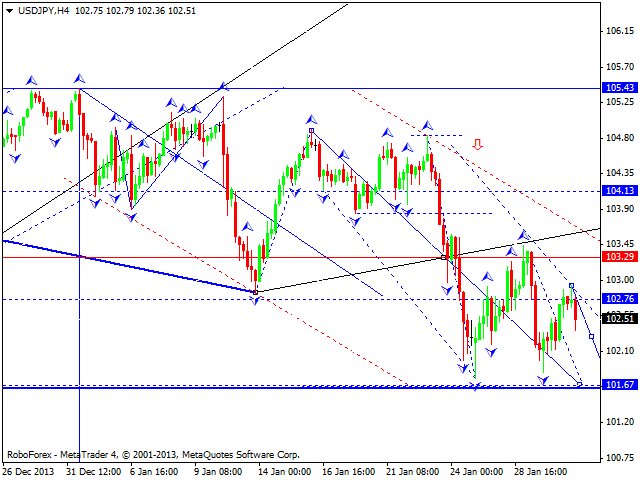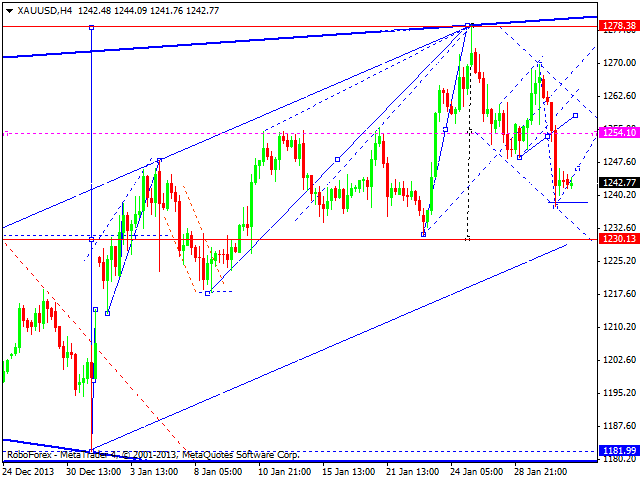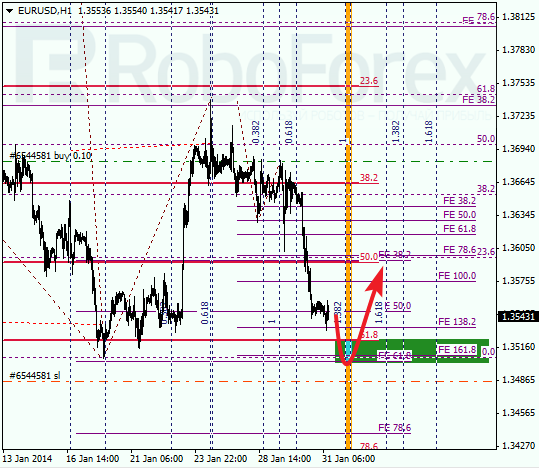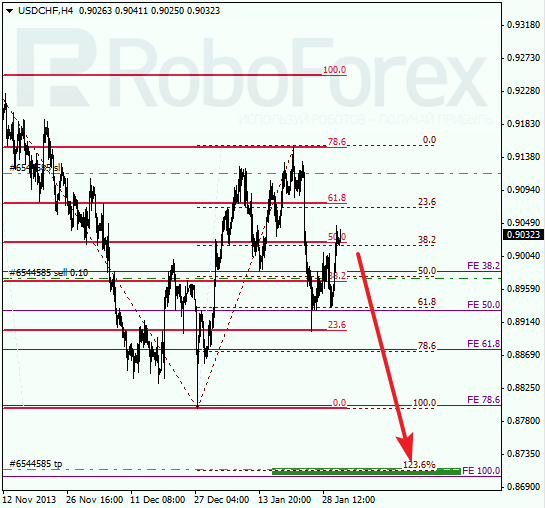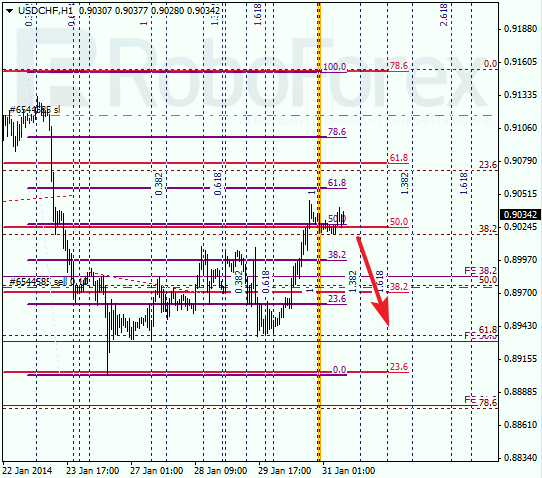Source: Karen Roche of The Energy Report (1/30/14)
http://www.theenergyreport.com/pub/na/porter-stansberry-are-you-playing-the-right-energy-trend
Are you cashing in on America’s free energy source? Porter Stansberry of Stansberry & Associates is more bullish than ever on what he calls America’s “free energy,” natural gas. He’s stocked the model portfolio of his newsletter, Stansberry’s Investment Advisory, with natural gas companies as well as the companies packaging it and moving it. His energy position was by far the highest-producing segment of his model portfolio over the past two years, some of those holdings even having doubled. In this interview with The Energy Report, Stansberry discusses the macroeconomic climate facing North American investors and how to take advantage of a building natural gas trend.
The Energy Report: Let’s start with something that was published in the S&A Digest Jan. 3. The headline was “Porter Stansberry: Why I now disagree with Steve Sjuggerud and Doc Eifrig,” who are associates with Stansberry & Associates. Porter, in that article, you state that you’re bearish on the market, citing that when the U.S. Federal Reserve stops quantitative easing (QE), interest rates will go up. Rising interest rates could be a catalyst for a stock market crash. Your colleagues feel that short-term interest rates will allow the market to continue to run. To what extent are you in disagreement?
Porter Stansberry: We are in disagreement because I think the timing is important. Steve in particular believes that the “Bernanke boom,” which is the ongoing inflation of the credit market, will continue for much longer. He forecasts that, before this credit market bubble bursts, stocks will reach much higher valuations, 25 or 35 times earnings. That’s a lot different than my outlook.
I believe stock multiples, the price that stocks are trading as a multiple of their annual earnings, are going to decrease substantially as the Fed begins to taper and interest rates rise. Stock price multiples are negatively correlated with real interest rates. As interest rates rise, the market multiple will fall. I see stocks getting less expensive. Steve sees stocks becoming much more expensive. I can’t tell you who will be right.
TER: What’s the catalyst for rising interest rates, as there wasn’t a reaction to the initial tapering?
PS: I studied what happened in the bond and the stock markets during previous periods when the Fed stopped manipulating the bond market. In every single case, the moment the Fed announced that there would be a cessation of intervention, stocks declined and interest rates went up. The Fed is still buying $75 billion ($75B) worth of U.S. Treasury debt. It is the world’s largest holder of Treasury debt, holding significantly more than the Chinese and the Japanese. The Fed is painting itself into a corner. If it does not continue to support the market, there is no doubt in my mind that prices for fixed income will go down. That means that yields will rise.
TER: What if the Fed very slowly tapers off the support?
PS: Let’s just be clear about what happened: 10-year rates have gone from 1.6% last May to about 3% recently. Interest rates have almost doubled in less than a 12-month period. That is an enormous move. That changes the value of bonds significantly. It reduces the price almost by 50%. Folks who bought bonds that were yielding 1.6% have gotten killed. The Fed’s buying is far more important to the market price of U.S. debt than any other economic variable. If the Fed stops buying, it doesn’t matter whether unemployment goes up or down. It doesn’t matter whether inflation is higher or lower. Its influence on the market is dominant. You can’t expect the market to have the same price when the guy who’s buying $1 trillion ($1T)/year of bonds steps away from the market.
TER: What’s going to cause the Fed to step away from the market?
PS: Two things: There is overwhelming evidence that QE is not solving the country’s economic problems. In particular, it is not increasing employment. There are 92 million (92M) Americans who aren’t working. There are 50M people on food stamps. That hasn’t improved from the Fed spending $3.5T on bonds. The rationale for this policy is nonexistent and the policy has been a failure. What the Fed is doing is economic suicide.
The Fed knows very well it’s going to be incredibly painful to unwind. It has a ticking time bomb in its hands. The Chinese are running balanced budgets. They’re running current count surpluses. They’re buying up all the gold that comes up for sale around the world, and they’re cutting bilateral currency agreements with every large economy in the world. All of this is laying the groundwork for making the yuan convertible in the capital account. What’s going to happen to the dollar’s role as the reserve currency around the world?
TER: Do you see a significant devaluation of the U.S. dollar in 2014?
PS: That’s a realistic scenario for this year. Time is slipping away from the Fed. If the Chinese make that step, the Fed is going to have a lot less flexibility. It has to get its house in order; it has to stop this wild experiment with the monetary base for the simple reason that our currency is in constant competition with others. We are at risk of alienating our partners who hold our currency in huge numbers. Ask yourself a simple question: Do I think it’s reasonable that the Fed will become the only global holder of Treasury bonds? That’s the course we’re on.
TER: If rates go up and markets go down in the U.S., to what extent does that also influence markets across the world?
PS: We’re already seeing some impact—emerging markets have gotten crushed over the last 12 months. More money is on the margin. A 3% yield is more reasonable to a banker than a 1.6% yield. As a result, money is coming out of markets where higher yields are available like Brazil, and that is influencing bond and equity markets around the world. If I’m right and the U.S. yields go to something like 5% or 6%, there will be an absolute catastrophe in emerging market stocks.
TER: Would that mean lower stock prices in the U.S, and if the yuan becomes a stronger currency, higher stock prices in China?
PS: There will definitely be higher prices for Chinese equities. There are other key factors in the pricing of Chinese equities that need to be resolved, mostly the issue of the rule of law and the amount of transparency. China’s equity markets have been badly damaged by the amount of accounting scandals the country has suffered during the past 18 months. I don’t think there will be a quick or easy solution to that reputational problem.
TER: Then there really is no viable alternative currency to the U.S. dollar in the short term?
PS: The yuan is actually a very attractive currency and will prove to be very reliable—much more so than the U.S. dollar. I think the Chinese are going to come out with a gold-backed yuan, whether that is done legally or simply a de facto gold backing due to the size of their treasury’s gold holdings. I think that they’re going to offer a very high real yield, and I think that they’ll do a good job, as they have done throughout the last 25 years in developing their economy. The problem, of course, is that the equity markets in China are not very well regulated and there has been a large amount of fraud.
TER: The newsletter writer Harry Dent believes the stock market will crash sometime between January and May. You expect a market correction. But where your views diverge is that Harry believes this crash will be followed by years of deflation. He points to the aging world population and a natural inclination for reduced consumption as you age. You believe there will be inflation as a result of the massive international QE. On the surface, that’s a demographic trend versus a monetary trend. In your view, how do these two factors play out?
PS: Harry, as much as I respect his long career as a publisher and as a pundit, is just completely off base. Inflation is always and everywhere a monetary phenomenon. I don’t care how much the population of Zimbabwe has aged or hasn’t aged, when you’re doubling and tripling your monetary base every year, you’re going to have runaway inflation sooner or later.
TER: So what’s an investor to do?
PS: The easy and simple thing is to own short-term, high-quality corporate bonds, so you could hold things that are going to mature in a year or two. If you’re getting 6% or 8% on those bonds, you’re going to be protected from inflation, and you’ll have the ability to roll them over at a higher rate so that you don’t have anything to worry about.
To protect yourself from loss of purchasing power, you can buy high-quality common stocks that are trading at a reasonable price, but with the ability to increase prices. In my newsletter, I just recommended the shares of Lorillard Inc. (LO:NYSE), which is a tobacco company that has the leading e-cigarette franchise. You can still buy that stock at about eight times cash earnings. It’s incredibly capital efficient. It pays about 60% of every $1 of revenue out to its shareholders in the form of cash dividends and buybacks.
Obviously, precious metals have long been a store of value in a period of inflation. You can buy gold and silver. You can buy real estate. I’ve been buying real estate pretty much continuously since 2010. I started out by buying slum apartments in South Florida. I then moved into trophy properties as the volume in the market picked up and properties began to change hands. Most recently, I bought a farm. I borrowed some money at 4% and bought a producing farm that will pay for itself. Assuming that interest rates in the U.S. go above 4%, I’ll get the money literally for free. Of course, I also expect farm prices to increase, so hopefully soybeans and corn give me a nice profit going forward.
I don’t think there’s going to be a crash, but I do think it’s going to be very difficult for people who are heavily invested in very expensive stocks. Do you have any idea what the earnings per share multiple on Amazon.com is?
TER: Twenty?
PS: One hundred and fixty six. Do you have any idea what Amazon.com’s operating margin is? It’s less than 1%, yet its shares are valued at 156 times earnings and more than 20 times book value. Investor expectations have become completely untethered to the reality of that business.
I’m not saying that Amazon is not a good business; it is. But at $180B and already dominating the U.S. retail industry, that company cannot grow fast enough nor can it possibly hope to increase its margins enough to justify investor expectations. The folks who are buying those companies are going to be very sorely disappointed.
TER: You have an interesting measurement that plays along with this concept called the S&A Blacklist. It includes companies with more than $10B in market cap trading at more than 10 times sales. You use this to determine if the market is getting frothy.
PS: Over the history of the equity markets, the number of companies that have been able to significantly increase and hold their value once they have been so highly overvalued is very small. Most companies that trade at these kinds of enormous valuations are never able to justify the valuations. Even if the earnings grow, the stock price declines.
Yes, some of these companies will turn into the next Facebook or eBay, but most of them will not. The ones that can’t are going to crash. We keep track of this list because at market bottoms there are fewer than five companies anywhere in the world that are trading for more than $10B and more than 10 times sales, while at market tops, the number of companies that meet those criteria can be more than 12. Today, there are 20 companies on that list, which is the highest number we have seen since the 2000 market top.
TER: To what extent is that number really just a reflection of having nowhere else to put your money?
PS: It’s a very big reflection of that. The Fed has driven people out of the bond market. People who were looking for reasonable, safe investments have been forced into things like master limited partnerships (MLPs) and real estate investment trusts. They have driven investors into riskier and riskier assets, and it’s increased the number of people who are willing to invest in stocks at insane prices.
TER: Last time we interviewed you, you were very bullish on natural gas. In fact, you said, “I’m more bullish on natural gas today than I’ve ever been in my life.” Is that still true?
PS: It absolutely is. I’m extremely bullish on the entire export energy complex in America: natural gas, propane, ethane, and everything that surrounds those industries like ships, pipelines and refineries. The entire complex is going to boom for a wonderfully logical reason that everyone can understand: In the U.S., natural gas and its other liquid components are free. Literally, this valuable energy source is being flared, is being burned into the air at lots of drill sites because we don’t have enough pipelines to collect it all yet. That is even though natural gas is going for $17/thousand cubic feet in Japan and even though propane is going for $100/barrel in Germany. These are very valuable energy sources that have lots of demand globally. The only thing we have to do to make huge profits is build pipelines, refineries and ships. This is going to be a very long, wonderful market for America.
TER: How are you playing that opportunity?
PS: I bought some very low-cost equity where reserves are very large. I like Devon Energy Corp. (DVN:NYSE)and Chesapeake Energy Corp. (CHK:NYSE). I like companies like ONEOK Inc. (OKE:NYSE) that own the collection and distribution pipelines. I’ve bought the refiners and the distributors, like Targa Resources Corp. (TRGP:NYSE), that take the propane and package it on the ships. I’ve also bought boat companies, like Teekay LNG Partners L.P. (TGP:NYSE), a tanker company that can transport liquefied natural gas (LNG). These have been very lucrative for us. My energy position was by far the highest-producing position in my portfolio during the last two years. We made more than 100% on several of these recommendations, including Chicago Bridge & Iron Co. N.V. (CBI:NYSE), which is building out LNG port facilities around the world. It’s a wonderful trend that still has a long way to go.
TER: The S&A Digest today said that “several of our analysts think gold is hitting a bottom, and gold stocks are one of the best values of the market today.” Is it time to think about going into gold equities or do we wait for the correction?
PS: I am recommending certain kinds of gold equities in my newsletter at the present time. I like NOVAGOLD (NG:TSX; NG:NYSE.MKT) because it has an absolutely ironclad balance sheet. Whether the price of gold goes up or down this year, there is no way that it can or will go bankrupt. It has around $200M in cash on its balance sheet, and it has two gold projects that have very high-grade ore that are very likely to become mines. I view the shares of NovaGold, which are still below $3, as essentially a call option on the price of gold. This company will certainly be solvent for the next two or three years, and if the price of gold were to go up in that period, the share price would probably go to $10 or $20. It’s a safe way to speculate on a higher gold price going forward.
But you have to understand that this is one position in a portfolio of probably 12 or 15 different recommendations. The allocation that I’m willing to commit to gold is still very small. That’s the way I prefer to be an investor in gold. I like to hold gold bullion and find these very reasonably priced call options that give me time to wait for a higher price.
TER: Have you found other gold equities that have that special call-option profile?
PS: Royal Gold Inc. (RGLD:NASDAQ; RGL:TSX) and Franco-Nevada Corp. (FNV:TSX; FNV:NYSE) are great ways for investors to have exposure to gold without having the risk of shaky capital structures. The key is to have plenty of runway to wait for a higher price. Having said all of this, I want to be very clear: Gold had a 12-year bull market. It is unlikely, in my mind, that that bull market will be followed by a short and painless bear market. I do expect higher gold prices in the future. I don’t expect higher gold prices in the short term. I would be surprised if gold was more than $2,000/oz by the end of this year. I’m buying things that give me plenty of upside, but are extremely low risk and have no chance of bankruptcy. I still think you have to see a lot of bankruptcy in the sector. There are just too many shoddily financed junior mining companies.
TER: Is there anything else you’d like to share with our readers?
PS: My parting thought is that even if it is painful in the short term, it is incredibly important to the future of our country and to the future of our global economy that the Western governments get their monetary and fiscal houses in order. We cannot continue to run the world with fiat currency that comes spewing out of the printing presses at the rates we have seen over the last two years. The amount of malinvestment that will be caused by the dislocations of these prices and the bad economic decisions that entrepreneurs are going to make based on faulty assumptions about interest rates and market multiples will be very disruptive. The longer it goes on, the worse it will become. We have to get to a point where governments are able and willing to live within their means. We have to get to a point where people can once again count on currencies and market prices. Today, unfortunately, we’re nowhere near that position. Until that gets fixed, people have to be very conservative with their personal finances.
TER: Do you think it will get fixed in your lifetime?
PS: It will have to, because we’re on a collision course for a train wreck if we don’t do something urgently to put our fiscal house in order and to get the government out of the business of manipulating the currency and manipulating interest rates.
TER: Porter, thanks a lot for your time.
PS: Sure thing.
Porter Stansberry founded Stansberry & Associates Investment Research, a private publishing company based in Baltimore, Maryland, in 1999. His monthly newsletter, Stansberry’s Investment Advisory, deals with safe-value investments poised to give subscribers years of exceptional returns. Stansberry oversees a staff of investment analysts whose expertise ranges from value investing to insider trading to short selling. Together, Stansberry and his research team do exhaustive amounts of real-world independent research. They’ve visited more than 200 companies in order to find the best low-risk investments. Prior to launching Stansberry & Associates Investment Research, Stansberry was the first American editor of the Fleet Street Letter, the oldest English-language financial newsletter.
Want to read more Energy Report interviews like this? Sign up for our free e-newsletter, and you’ll learn when new articles have been published. To see a list of recent interviews with industry analysts and commentators, visit our Interviews page.
DISCLOSURE:
1) Karen Roche conducted this interview for The Energy Report and provides services to The Energy Report as an employee. She or her family owns shares of the following companies mentioned in this interview: None.
2) The following companies mentioned in the interview are sponsors of The Energy Report:NOVAGOLD. Franco-Nevada is not affiliated with Streetwise Reports. Streetwise Reports does not accept stock in exchange for its services or as sponsorship payment.
3) Porter Stansberry: I or my family own shares of the following companies mentioned in this interview: None. I personally am or my family is paid by the following companies mentioned in this interview: None. My company has a financial relationship with the following companies mentioned in this interview: None. I was not paid by Streetwise Reports for participating in this interview. Comments and opinions expressed are my own comments and opinions. I had the opportunity to review the interview for accuracy as of the date of the interview and am responsible for the content of the interview. Please note: model portfolio refers to the recommendations Stansberry makes for his subscribers. He does not personally buy or hold shares of companies he recommends.
4) Interviews are edited for clarity. Streetwise Reports does not make editorial comments or change experts’ statements without their consent.
5) The interview does not constitute investment advice. Each reader is encouraged to consult with his or her individual financial professional and any action a reader takes as a result of information presented here is his or her own responsibility. By opening this page, each reader accepts and agrees to Streetwise Reports’ terms of use and full legal disclaimer.
6) From time to time, Streetwise Reports LLC and its directors, officers, employees or members of their families, as well as persons interviewed for articles and interviews on the site, may have a long or short position in securities mentioned and may make purchases and/or sales of those securities in the open market or otherwise.
Streetwise – The Energy Report is Copyright © 2014 by Streetwise Reports LLC. All rights are reserved. Streetwise Reports LLC hereby grants an unrestricted license to use or disseminate this copyrighted material (i) only in whole (and always including this disclaimer), but (ii) never in part.
Streetwise Reports LLC does not guarantee the accuracy or thoroughness of the information reported.
Streetwise Reports LLC receives a fee from companies that are listed on the home page in the In This Issue section. Their sponsor pages may be considered advertising for the purposes of 18 U.S.C. 1734.
Participating companies provide the logos used in The Energy Report. These logos are trademarks and are the property of the individual companies.
101 Second St., Suite 110
Petaluma, CA 94952
Tel.: (707) 981-8204
Fax: (707) 981-8998
Email: jluther@streetwisereports.com
